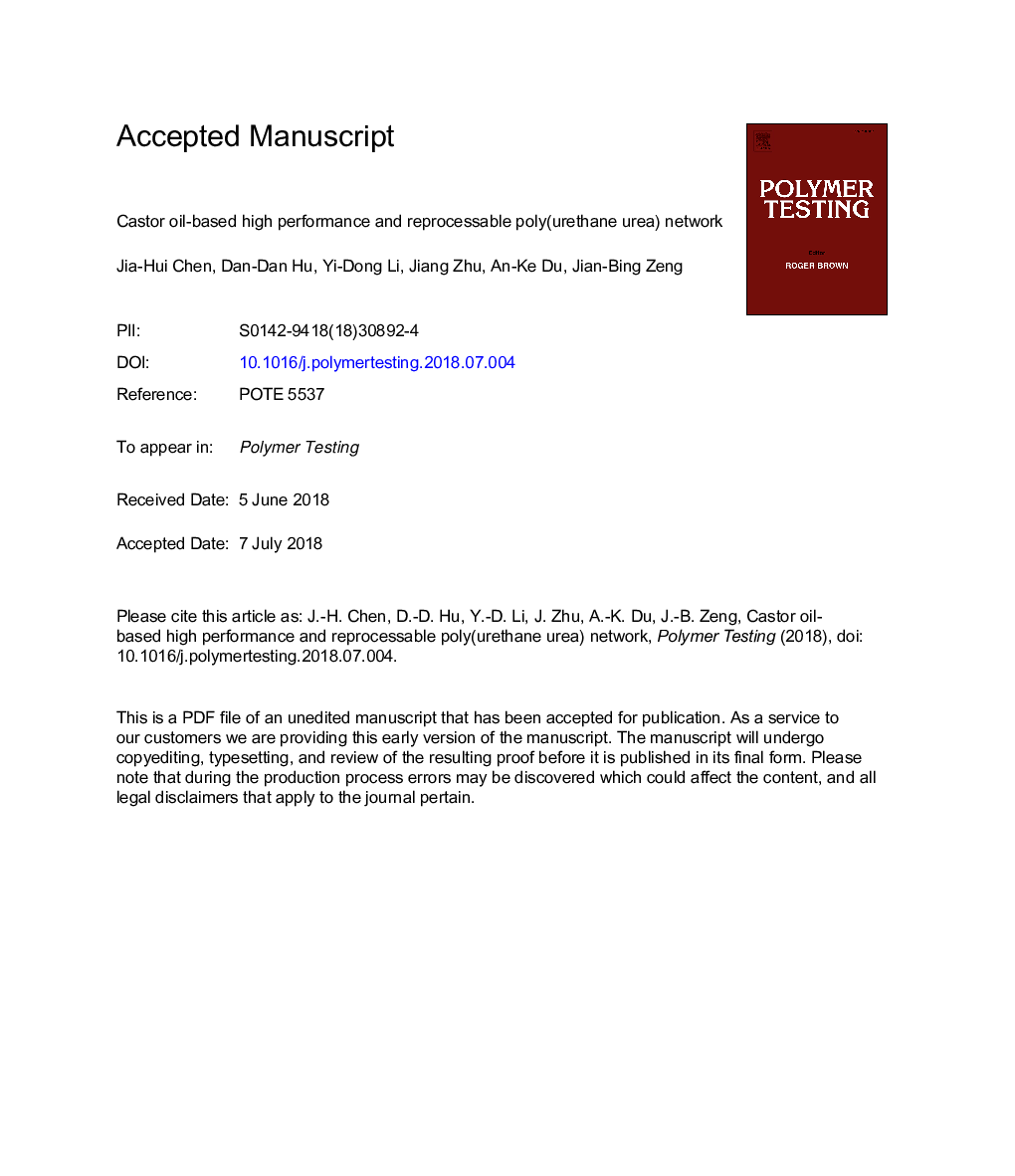| Article ID | Journal | Published Year | Pages | File Type |
|---|---|---|---|---|
| 7824375 | Polymer Testing | 2018 | 34 Pages |
Abstract
A bio-based poly (urethane urea) (CIPUU) network comprised of castor oil (CO), isosorbide (IS) and 4-aminophenyl disulfide (APD) was prepared and compared to the corresponding polyurethane (CIPU) consisting of CO and IS. Permanently cross-linked CIPU could not be reprocessed, while CIPUU could be reprocessed, as the network topology could rearrange through an associative disulfide exchange reaction. CIPUU had a higher Young's modulus than CIPU due to the higher rigidity of APD with benzene rings and the formed hydrogen bonding of the urea unit. Stress relaxation measurement indicated that the network topology of CIPUU was stable at temperatures lower than 100â¯Â°C due to the inactive disulfide exchange reaction at low temperatures. The exchange reaction became increasingly active with increasing temperature, as evidenced by the gradually reduced relaxation time. CIPUU showed excellent reprocessability, as indicated by the remaining gel fraction and fully recovered mechanical properties after thermal remoulding at 180â¯Â°C several times. In addition, CIPUU showed good thermal stability with an onset decomposition temperature (â¼260â¯Â°C) much higher than the reprocessing temperature.
Related Topics
Physical Sciences and Engineering
Chemistry
Organic Chemistry
Authors
Jia-Hui Chen, Dan-Dan Hu, Yi-Dong Li, Jiang Zhu, An-Ke Du, Jian-Bing Zeng,
